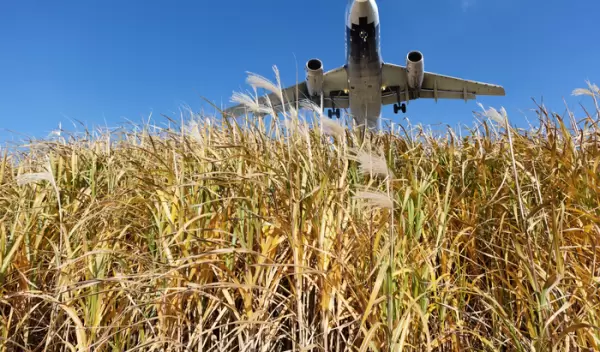
Study shows full decarbonization of U.S. aviation sector is within grasp
Every day, 45,000 planes fly across the United States, carrying some 1.7 million passengers. Aviation dominates a frequent traveler's individual contribution to climate change and yet is one of the most challenging sectors to decarbonize.
The United States is the largest contributor to aviation carbon dioxide emissions in the world and is responsible for more than a quarter of all carbon dioxide emitted from flying. But what if we could make all U.S. air travel nearly emission free?
What if we could replace carbon-intensive jet fossil fuels with a cleaner alternative: biojet fuels derived from rain-fed grass grown in the U.S.?
New U.S. National Science Foundation-supported research published in the journal Nature Sustainability shows a pathway toward full decarbonization of U.S. aviation fuel use by substituting conventional jet fuel with sustainably produced biofuels.
The study, led by Arizona State University researchers, found that planting the grass miscanthus on 23.2 million hectares of existing marginal agricultural lands – land that's often fallow or is poor in soil quality – across the United States would provide enough biomass feedstock to meet the liquid fuel demands of the U.S. aviation sector fully from biofuels, an amount expected to reach 30 billion gallons per year by 2040.
"When you plant crops over strategically designed areas, the planting of these crops has an impact on the climate," said Matei Georgescu, co-corresponding author of the study. "If there is a change in the underlying landscape, for example an increase or decrease in the amount of vegetation, there may be implications for local to regional scale climate, including more or less precipitation, or warmer or cooler temperatures."
To account for these land-atmosphere interactions, the researchers took outputs from their hydroclimate model to inform their ecosystem model. The team then evaluated the economic feasibility of growing these grasses.


